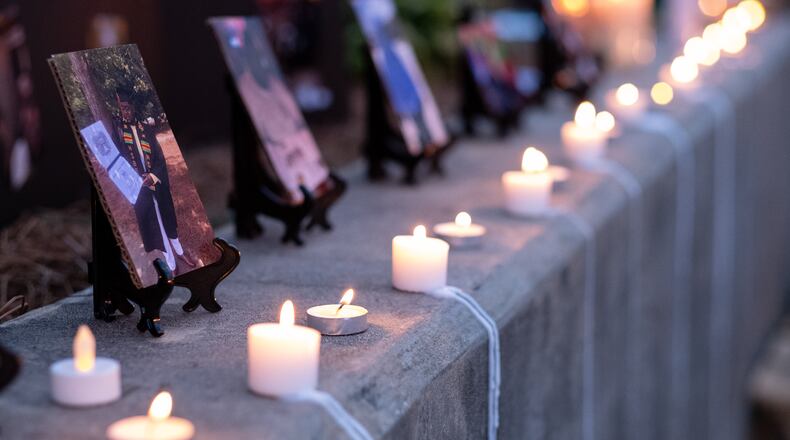A 1-year-old Cobb County boy has become the youngest in Georgia to die from the coronavirus, the State Department of Public Health said Friday.
The boy, whose name was not released, was identified as Black and had at least one underlying condition. Due to privacy laws, no further details surrounding the baby’s death were released.
The health department reported the death, but a spokeswoman said it would not provide information beyond what was on its website, such as what the child’s underlying condition was, or how long ago the death occurred.
Seventy-eight deaths were reported Friday and the state has recorded 5,471 deaths related to the coronavirus in all. More than 265,000 cases have been recorded since the start of the pandemic, the DPH said Friday.
Five children under the age of 18 have now died in Georgia, including the 1-year-old.
Previously, the youngest to die from the virus in Georgia was a 7-year-old Chatham County boy. The county’s coroner previously said the preliminary investigation suggested COVID-19 gave the boy a fever, which triggered a seizure that happened to occur while he was bathing.
“We tend to think that everybody who’s going to die is old, right?” said Dr. Carlos del Rio, Professor of Medicine in Emory University’s Division of Infectious Diseases. “And we frequently hear that kids are fine, if they get the disease they don’t get sick. Well they do tend to do better. But at the end of the day kids can get sick and they can actually die.”
The latest death comes days after health officials said the number of Georgians under the age of 18 diagnosed with COVID-19 has jumped 65% in the past month. More than 21,000 children have tested positive since March, The Atlanta Journal-Constitution published earlier this week.
That means the adults in their lives need to follow health guidance, del Rio said.
“This kid is one year old,” del Rio said. “We need to protect our kids from getting infected.”
The CDC recommends that children be distanced six feet from other people just like adults, and that as soon as kids can keep a mask on — older than 2 — they wear a mask when in public. And importantly, people around the kids need to behave safely, too, so they don’t bring the virus home.
Even several months into the pandemic, scientists still know less about COVID-19 in children than they do about the disease in adults. That’s in large part because when kids do get infected, often no one knows because they’re less likely to develop symptoms. Then they’re not tested and they don’t get studied.
No studies of coronavirus and children have been comprehensive enough and lasted long enough to give scientists complete conclusions.
But researchers say they do know more now than they used to.
“It’s still unclear exactly how it works with kids,” said Dr. Hugo Scornik, president of Georgia’s chapter of the American Academy of Pediatrics. “Certainly we know kids can get this virus. Kids can have bad health effects from the virus. And children can transmit the virus. But what’s not known is how much.”
In the early months of the virus, some thought children may not be very infectious, especially after a study of children in China suggested that. But that belief is changing.
Scornik cited a study of a Georgia summer camp to show how assumptions about the virus in kids can be overturned. The study of a camp that took place in late June found that over the course of the camp COVID-19 ripped through the kids and staff. The first infection was recorded about a week in, and everyone went home within days. But by the end of the study, the virus had infected 76% of the kids and camp workers for whom test results were available.
The conclusions still aren’t definitive, except to make it clear that measures recommended by health officials still make sense. The kids slept together in rooms with closed windows and, unlike the adults, weren’t required to wear masks. They also engaged in robust singing, which can spread virus particles more.
When children do get sick, the virus can appear differently than it does in adults. In addition, it can appear differently for young kids than it does for older kids.
Some of the symptoms seen in children have included seizures, since fevers can have that effect in children. In rare cases that have occurred well after the infection, it has produced a collection of symptoms called Multi-Inflammatory Syndrome in Children, or MIS-C.
Keep Reading
The Latest
Featured



